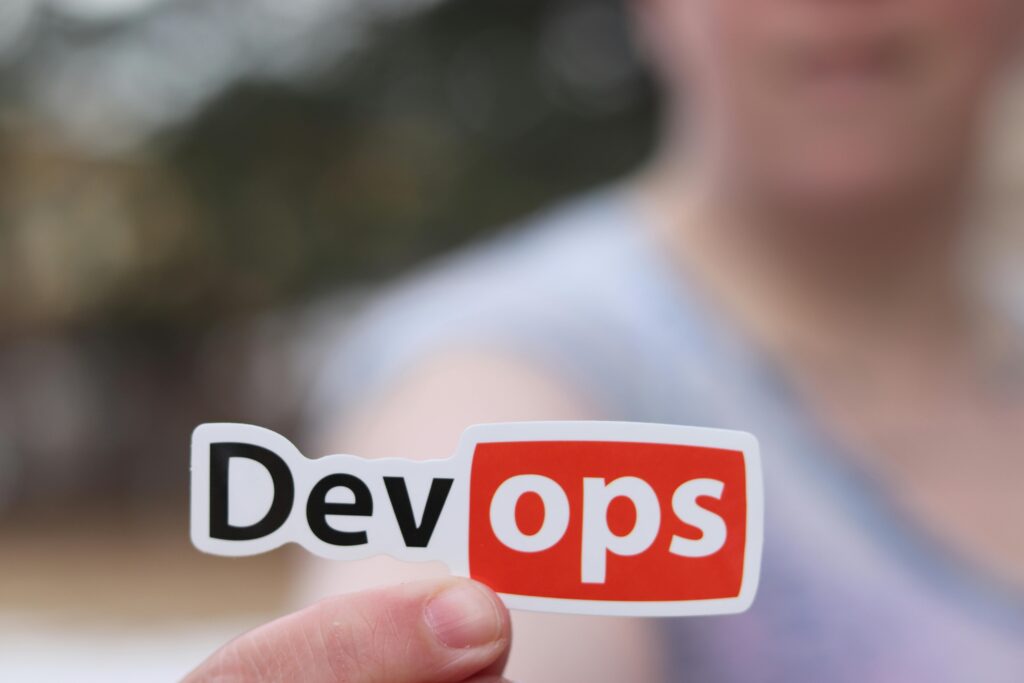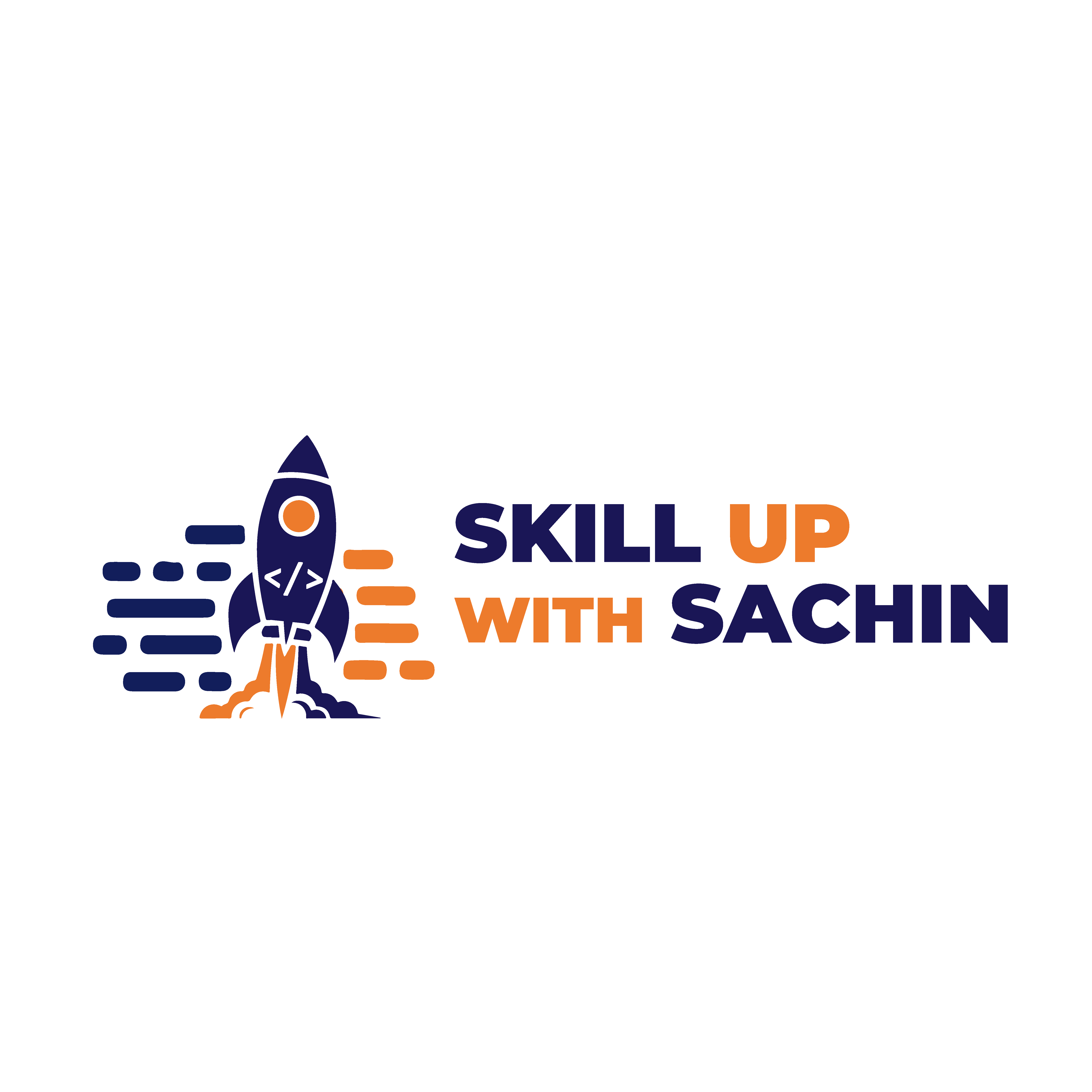Learn Docker with me in few hours : All About Docker

Are you looking for Docker session ? Dive with me into the Docker world with this series which talks about Docker, Docker Images and containers along with the real-time projects. From understanding Docker’s core concepts to practical insights, this series will equip you with the knowledge to harness its potential. Subscribe now for a deep dive into the exciting realm of Docker! Don’t miss out – click the link to watch and level up your tech expertise. Docker is a powerful platform designed to simplify and streamline the process of developing, shipping, and running applications. It does this by leveraging containerization, a lightweight form of virtualization, which allows developers to package applications along with all their dependencies into a single container. These containers can then be deployed on any Docker-enabled host, ensuring consistency across various environments. Core Concepts of Docker 1. Containers vs. Virtual Machines: Containers are often compared to virtual machines (VMs), but there are significant differences. Unlike VMs, which virtualize hardware, containers virtualize the operating system. This makes containers much lighter and faster to start. They share the host OS kernel, but each container operates in isolation with its own filesystem, processes, and network stack. This results in more efficient use of system resources and better performance. 2. Docker Images: A Docker image is a lightweight, standalone, and executable package that includes everything needed to run a piece of software, including the code, runtime, libraries, environment variables, and configuration files. Docker images are the basis of containers, and they are built using a file called a Dockerfile, which contains a series of instructions on how to construct the image. 3. Docker Containers: Containers are instances of Docker images. When you run a Docker image, it becomes a container. These containers are isolated environments where applications can run without interference from other processes or applications on the host machine. Containers can be easily started, stopped, and deleted, making them extremely flexible and manageable. Benefits of Docker 1. Consistency Across Environments: One of the biggest challenges in software development is ensuring that an application works consistently across different environments (development, testing, production). Docker solves this by encapsulating all dependencies and configurations into a single container, ensuring that the application behaves the same regardless of where it is run. 2. Efficient Resource Utilization: Containers are more efficient than virtual machines because they share the host system’s kernel and do not require a full OS. This allows more containers to be run on the same hardware, reducing overhead and improving performance. 3. Simplified Deployment: Docker makes it easy to deploy applications by providing a simple, consistent environment. With Docker, you can package your application and its dependencies once and run it anywhere. This is particularly useful in a microservices architecture, where each service can be containerized and deployed independently. 4. Version Control and Rollbacks: Docker images are versioned, which allows you to track changes, roll back to previous versions, and manage different versions of your application easily. This is a significant advantage in continuous integration and continuous deployment (CI/CD) pipelines. Practical Insights into Docker 1. Dockerfile: A Dockerfile is a text file that contains all the commands needed to build a Docker image. The Dockerfile starts with a base image (such as ubuntu or node), and then you can add your application code, install dependencies, and set environment variables. Here’s a basic example of a Dockerfile for a Node.js application: 2. Docker Compose: For more complex applications that involve multiple containers (e.g., a web server, a database, and a caching layer), Docker Compose is an invaluable tool. Docker Compose allows you to define and run multi-container Docker applications using a YAML file (docker-compose.yml). This file defines the services, networks, and volumes required for the application. Here’s an example of a simple Docker Compose file: 3. Docker Hub: Docker Hub is a cloud-based repository where Docker users can store and share Docker images. You can find official images for popular software, such as databases, web servers, and programming languages, as well as community-contributed images. Docker Hub simplifies the process of finding and using images for your projects. The video series you provided promises to delve deep into these topics, offering both theoretical knowledge and practical insights. By following the series, you will gain a solid understanding of Docker’s core concepts and how to apply them to real-world scenarios. From creating Dockerfiles and managing containers to deploying applications using Docker Compose, this series is a comprehensive guide to mastering Docker. To maximize your learning experience, it’s highly recommended to subscribe and stay updated with each episode, as the content is structured to gradually build your expertise. Don’t miss this opportunity to dive into Docker and enhance your tech skills—click the link, start watching, and get ready to level up your Docker knowledge!
Do you know how DNS works ?

Ever wondered how a simple click on a website URL leads you to a beautifully designed webpage? Let’s dive into the world of DNS! Let’s understand with this pictorial representation how DNS works actually. Step-by-Step Process: Related Questions and Answers: Q1: What is a DNS Resolver? Q2: What role does the Root Nameserver play in DNS resolution? Q3: Why is caching important in DNS resolution? Q4: What happens if the Authoritative Nameserver is down? Q5: Can DNS resolution fail? If so, why? This process is fundamental to how the internet works, allowing users to access websites using human-readable domain names instead of numerical IP addresses.
AWS S3 : All you need to know about S3

AWS S3 is crucial for storage as it offers scalable, durable, and secure object storage. It provides benefits like unlimited storage capacity and high availability, enabling easy access to data from anywhere, anytime. To know more about S3 and how the S3 Lifecycle works, watch this tutorial. Subscribe to my channel for more such videos. AWS S3 (Simple Storage Service) is a powerful cloud storage solution that provides highly scalable, durable, and secure object storage. It offers benefits such as unlimited storage capacity, cost-effective pricing models, and high availability. With S3, you can easily store and retrieve any amount of data at any time, from anywhere on the web. One of the key features of AWS S3 is the S3 Lifecycle, which allows you to manage your objects so that they are stored cost-effectively throughout their lifecycle. This feature enables automated transitions between different storage classes based on defined rules, helping you optimize costs while ensuring that your data is always available when needed. Key Benefits of Amazon S3: S3 Lifecycle Policies: Managing Data Cost-Effectively One of the powerful features of S3 is its lifecycle management capabilities. S3 Lifecycle Policies enable you to define rules to automatically transition objects between different storage classes or to delete them after a specified period. This is particularly useful for managing storage costs while maintaining the availability and durability of your data. How S3 Lifecycle Works: To dive deeper into the workings of AWS S3 and the S3 Lifecycle management, watch this detailed tutorial. If you’re interested in cloud computing, don’t forget to subscribe to my channel for more insightful videos! Scenario-Based Interview Questions and Answers 1. Scenario: You need to store large amounts of data that is infrequently accessed, but when accessed, it should be available immediately. What S3 storage class would you use? Answer:For this scenario, the S3 Standard-IA (Infrequent Access) storage class would be ideal. It is designed for data that is accessed less frequently but requires rapid access when needed. It offers lower storage costs compared to the S3 Standard class while maintaining high availability and durability. 2. Scenario: You are working on a project where cost optimization is crucial. You want to automatically move older data to a less expensive storage class as it ages. How would you achieve this? Answer:You can achieve this by configuring an S3 Lifecycle Policy. This policy allows you to define rules that automatically transition objects to different storage classes based on their age or other criteria. For example, you can set a rule to move objects from S3 Standard to S3 Standard-IA after 30 days, and then to S3 Glacier after 90 days for further cost savings. 3. Scenario: A critical file stored in S3 is accidentally deleted by a team member. How can you ensure that files can be recovered if deleted in the future? Answer:To protect against accidental deletions, you can enable S3 Versioning on the bucket. Versioning maintains multiple versions of an object, so if an object is deleted, the previous version is still available and can be restored. Additionally, enabling MFA Delete adds an extra layer of security, requiring multi-factor authentication for deletion operations. 4. Scenario: You are dealing with sensitive data that needs to be encrypted at rest and in transit. What options does S3 provide for encryption? Answer:AWS S3 offers several options for encrypting data: Additionally, S3 supports encryption in transit via SSL/TLS to protect data as it travels to and from S3. 5. Scenario: You are managing a large dataset of user-generated content on S3. This content is frequently accessed for the first 30 days but becomes less relevant over time. How would you optimize storage costs using S3 lifecycle policies? Answer: To optimize storage costs, I would implement an S3 Lifecycle Policy that transitions objects from the S3 Standard storage class to S3 Standard-IA (Infrequent Access) after 30 days, as these objects will be less frequently accessed but still need to be available quickly. After 90 days, I would transition the objects to S3 Glacier for long-term archival storage. If the content is no longer needed after a certain period, I could also set an expiration rule to delete the objects after, say, 365 days. 6. Scenario: Your team accidentally uploaded sensitive data to an S3 bucket that should have been encrypted but was not. What steps would you take to secure the data? Answer: First, I would identify and isolate the sensitive data by restricting access to the S3 bucket using an S3 bucket policy or IAM policy. Then, I would use S3’s server-side encryption (SSE) to encrypt the data at rest. If the data needs to remain accessible, I would copy the unencrypted objects to a new bucket with encryption enabled, and then delete the original unencrypted objects. I would also set a bucket policy that enforces encryption for all future uploads to ensure compliance. 7. Scenario: You have a large number of small files in an S3 bucket, and you notice that your S3 costs are higher than expected. What could be causing this, and how would you address it? Answer: The increased costs could be due to the high number of PUT and GET requests, as S3 charges for both storage and requests. To reduce costs, I would consider aggregating small files into larger objects to reduce the number of requests. Additionally, I would evaluate whether S3 Intelligent-Tiering is appropriate, as it automatically moves objects between two access tiers when access patterns change, which could further optimize costs for frequently and infrequently accessed data. 8. Scenario: Your company needs to ensure that critical log files stored in S3 are retained for compliance purposes for at least 7 years. However, they are not accessed frequently. What would be your approach? Answer: I would store the log files in the S3 Glacier storage class, which is designed for long-term archival and offers a lower cost for data that is rarely accessed. To comply with the 7-year retention requirement, I would create an
Do you know, How does AutoScaling Works in AWS ?

AutoScaling in AWS !! It’s a very hot topic and we need to understand how autoscaling happens , how does the load balancer work. Have you ever thought how Netflix, Hotstar and Amazon handle their load in peak hours. They have great scalable architecture with load balancer and multiple components which together helps them to handle the load. In this video, I have talked about Network Load Balancer. Subscribe, Share and Like.
DevOps in the Kitchen: Demystifying Virtualisation and Containerisation with DevOps

In today’s fast-paced tech world, terms like virtualization and containerization are often thrown around. Understanding these concepts can be complex, but analogies can make them easier to grasp. Let’s dive into these essential technologies using a relatable kitchen analogy and see how they fit into the DevOps landscape. Virtualization: The Professional Kitchen Imagine a bustling, professional restaurant kitchen. This kitchen is large and equipped to handle multiple chefs preparing different dishes simultaneously. Each chef requires their own set of tools and ingredients to prepare their unique dishes. However, instead of having separate kitchens, they all share the same space and resources. Key Points: Containerization: The Food Trucks Now, imagine instead of a large kitchen, the chefs work in food trucks. Each food truck is compact, containing everything the chef needs to prepare and serve their dish. These food trucks can be parked anywhere and moved around easily. Key Points: DevOps: The Integrated Restaurant In a traditional restaurant setup, the kitchen (development) and the serving area (operations) often work in silos. This can lead to delays and miscommunication. DevOps transforms this by integrating these teams for better collaboration and efficiency. Key Points: Challenges of DevOps While DevOps offers numerous benefits, it also comes with challenges: Docker Terminology Docker is a platform that helps developers create, deploy, and run applications in containers. Think of Docker as a tool that allows you to package an application along with everything it needs to run (like code, libraries, and settings) into a neat, portable box called a container. Here’s a breakdown of some key Docker terminologies explained in simple terms: Conclusion Understanding virtualization and containerization through the kitchen analogy helps demystify these concepts. Virtualization is like having multiple chefs working at isolated workstations in a shared kitchen, while containerization is like chefs operating independent food trucks. DevOps, on the other hand, is about integrating the kitchen and serving teams for better efficiency and collaboration. By adopting DevOps, organizations can break down silos, streamline processes, and continuously improve their delivery pipeline, ensuring that their customers receive the best possible experience. However, it’s essential to address the cultural, skillset, and security challenges to fully reap the benefits of this approach.
A PRACTITIONER’S PERSPECTIVE OF DEVOPS: REGULAR COMPLIANCE AND AUDITS

Checkout my final article on “Ensuring Security and Compliance in DevOps” . Security is key pillar at each stage of DevOps lifecycle and continuous security along with right set of compliance and audit checks should be maintained within an application. Source: Securonix
The Rise and Role of DevOps Engineers: Bridging Development and Operations

In today’s fast-paced tech landscape, the role of a DevOps engineer has become indispensable. As someone who has spent nearly a decade in this field, I’ve witnessed firsthand the evolution and impact of DevOps on software development and IT operations. Let’s dive into what makes this role so crucial and how you can embark on a successful career in DevOps. The Evolution of DevOps The journey of DevOps began as a response to the traditional silos between development and operations teams. In the early days, developers focused on writing code, while operations teams were responsible for deploying and managing applications. This separation often led to inefficiencies, miscommunication, and longer development cycles. DevOps emerged as a solution to bridge this gap. It emphasizes collaboration, automation, and continuous improvement, allowing organizations to deliver software faster and more reliably. As DevOps practices matured, the demand for skilled professionals who could navigate both development and operations grew exponentially. The Role of a DevOps Engineer A DevOps engineer wears many hats. They are the glue that binds development and operations, ensuring that the software development lifecycle is smooth and efficient. Here are some key responsibilities: Skills and Qualifications To excel as a DevOps engineer, a blend of technical and soft skills is necessary. Here’s a roadmap to get you started: Gaining Experience Hands-on experience is key to becoming a proficient DevOps engineer. Here are some ways to gain practical knowledge: The Future of DevOps As organisations continue to embrace digital transformation, the demand for DevOps engineers will only grow. The role is evolving, with a greater emphasis on AI and machine learning to automate even more processes. Staying curious and continuously learning will be key to keeping up with these advancements. Achieving Goals in DevOps Setting and achieving goals requires a clear understanding of one’s values and breaking down large goals into manageable tasks. Continuous learning and skill development, rather than just aiming for titles, can provide a more fulfilling and progressive career path. Being a Change Agent DevOps engineers often act as catalysts for change, promoting new practices and bridging gaps between different teams. They need to cultivate an environment of safety, learning, and collaboration, encouraging small, incremental changes and celebrating successes. Recruiter Insights Career Pathways In conclusion, the rise of DevOps engineers marks a significant shift in how we approach software development and operations. By bridging the gap between these traditionally separate domains, DevOps engineers enable faster, more reliable software delivery. If you’re passionate about technology and enjoy solving complex problems, a career in DevOps can be incredibly rewarding.
Introduction to Database DevOps

Many companies use automated processes (like pipelines) to manage their software code, deploy it, test it, and set up their computer systems. However, when it comes to working with databases (which store important data), they often don’t use these same automated methods. Instead, they handle databases in a separate way, and this causes a lot of problems. It’s now time to start using automation for databases too. What is Database DevOps? Database DevOps is a method that helps speed up and improve the way software is created and released. It focuses on making it easier for developers and operations teams to work together. When you want to create reliable products, it’s essential to make sure that databases and software work well together. With DevOps, you can build and launch both the software and the database using the same setup. We use DevOps techniques to handle database tasks. We make changes based on feedback from the stages where we deliver and develop applications. This helps ensure a smooth delivery process. Database DevOps Features : Database DevOps products typically have the following features: The Database Bottleneck (Source: Liquibase) A 2019 State of Database Deployments in Application Delivery report found that for the second year in a row, database deployments are a bottleneck. 92% of respondents reported difficulty in accelerating database deployments. Since database changes follow a manual process, requests for database code reviews are often the last thing holding up a release. Developers understandably get frustrated because the code they wrote a few weeks ago is still in review. The whole database change process is just a blocker. Now, teams no longer have to wait for DBAs to review the changes until the final phase. It’s not only possible but necessary to do this earlier in the process and package all code together. Top Database DevOps Challenges Database DevOps, while incredibly beneficial, comes with its fair share of challenges. Some of the top challenges in implementing Database DevOps include: Successfully addressing these challenges involves a combination of technology, processes, and a cultural shift toward collaboration and automation between development and operations teams. How can DevOps help in solving the above challenges? DevOps practices can help address many of the challenges associated with Database DevOps by promoting collaboration, automation, and a systematic approach to managing database changes. Here’s how DevOps can assist in solving the problems mentioned: By combining DevOps practices with these tools and examples, organizations can enhance their Database DevOps capabilities, streamline database management, and achieve more efficient, secure, and reliable database operations. Top Database DevOps Tools Open-Source Database DevOps Tools: Paid Database DevOps Tools: These tools cater to different database systems, such as MySQL, PostgreSQL, Oracle, SQL Server, and more. The choice of tool depends on your specific database technology, project requirements, and budget. It’s essential to evaluate each tool’s features, compatibility, and community/support when selecting the right one for your Database DevOps needs.
Embracing Agile Transforming Project Management for the Modern Era

In the fast-paced world of software development, embracing Agile methodologies has become more than just a trend—it’s a necessity. As someone with nine years of experience in DevOps and cloud technologies, I’ve seen firsthand how Agile approaches revolutionise project management and product development. Let’s dive into the core principles of Agile and why they matter. What is Agile ? Agile is an approach to managing and executing projects that focuses on iterative development, continuous feedback, and adaptive planning. Unlike traditional project management, which often involves extensive upfront planning and rigid processes, Agile embraces flexibility and responsiveness to change. This method is especially effective in handling the complexities and uncertainties inherent in modern projects. The Origins & Applications of Agile Originally coined in 2001 by leaders in the software industry, Agile has become the standard for most contemporary software projects. Whether you’re working at a tech giant or a startup, Agile methodologies likely play a pivotal role in your development processes. However, Agile isn’t confined to software alone—it can be applied to any type of project, from managing service tickets to organising a picnic. Core Characteristics of Agile Projects Benefits of Agile From the customer’s perspective, Agile delivers a desirable product that evolves based on consistent feedback. Customers receive high-priority features sooner, ensuring that the product aligns with their needs and market changes. This adaptability often leads to higher quality and innovation. For teams, Agile fosters higher job satisfaction by empowering members and encouraging continuous learning and creativity. The iterative nature of Agile also lowers costs and risks by reducing waste and enabling rapid response to issues and changes. Agile vs Waterfall : A Fundamental Shift The traditional waterfall approach is sequential and involves distinct phases such as analysis, design, building, testing, and release. This method often suffers from delayed feedback and high costs associated with changes made late in the process.In contrast, Agile promotes many small iterations, allowing for rapid feedback and continuous adaptation. Each iteration results in a usable product increment, making it easier to respond to changes and deliver high-value features early. Embracing Agile in Your Projects While some projects may still require elements of the waterfall approach, understanding and integrating Agile principles where appropriate can give you a competitive edge. Agile is not just about following a set of practices; it’s about fostering a culture of continuous improvement and responsiveness to change.As someone deeply embedded in the world of DevOps and cloud technologies, I’ve seen the transformative power of Agile. By embracing Agile methodologies, you can enhance your project management, boost team morale, and ultimately deliver better products.Let’s keep pushing the boundaries, innovating, and continuously improving our processes. Agile is not just a methodology; it’s a mindset that drives us to deliver excellence in everything we do.
Series 2 – Unlocking the Power of JIRA

Basic Guidelines / Checklist to be followed while creating JIRA Project. Creating a JIRA project involves several steps to ensure it is set up correctly and meets the team’s needs. Here’s a basic checklist to guide you through the process: By following this checklist, you can ensure that your JIRA project is well-configured and ready to support your team’s work effectively.


